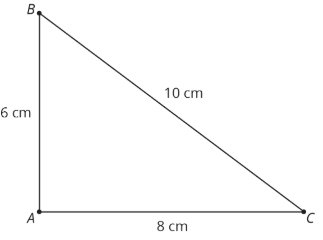7.2.1: Multiplying Powers of 10
- Page ID
- 36789
\( \newcommand{\vecs}[1]{\overset { \scriptstyle \rightharpoonup} {\mathbf{#1}} } \)
\( \newcommand{\vecd}[1]{\overset{-\!-\!\rightharpoonup}{\vphantom{a}\smash {#1}}} \)
\( \newcommand{\id}{\mathrm{id}}\) \( \newcommand{\Span}{\mathrm{span}}\)
( \newcommand{\kernel}{\mathrm{null}\,}\) \( \newcommand{\range}{\mathrm{range}\,}\)
\( \newcommand{\RealPart}{\mathrm{Re}}\) \( \newcommand{\ImaginaryPart}{\mathrm{Im}}\)
\( \newcommand{\Argument}{\mathrm{Arg}}\) \( \newcommand{\norm}[1]{\| #1 \|}\)
\( \newcommand{\inner}[2]{\langle #1, #2 \rangle}\)
\( \newcommand{\Span}{\mathrm{span}}\)
\( \newcommand{\id}{\mathrm{id}}\)
\( \newcommand{\Span}{\mathrm{span}}\)
\( \newcommand{\kernel}{\mathrm{null}\,}\)
\( \newcommand{\range}{\mathrm{range}\,}\)
\( \newcommand{\RealPart}{\mathrm{Re}}\)
\( \newcommand{\ImaginaryPart}{\mathrm{Im}}\)
\( \newcommand{\Argument}{\mathrm{Arg}}\)
\( \newcommand{\norm}[1]{\| #1 \|}\)
\( \newcommand{\inner}[2]{\langle #1, #2 \rangle}\)
\( \newcommand{\Span}{\mathrm{span}}\) \( \newcommand{\AA}{\unicode[.8,0]{x212B}}\)
\( \newcommand{\vectorA}[1]{\vec{#1}} % arrow\)
\( \newcommand{\vectorAt}[1]{\vec{\text{#1}}} % arrow\)
\( \newcommand{\vectorB}[1]{\overset { \scriptstyle \rightharpoonup} {\mathbf{#1}} } \)
\( \newcommand{\vectorC}[1]{\textbf{#1}} \)
\( \newcommand{\vectorD}[1]{\overrightarrow{#1}} \)
\( \newcommand{\vectorDt}[1]{\overrightarrow{\text{#1}}} \)
\( \newcommand{\vectE}[1]{\overset{-\!-\!\rightharpoonup}{\vphantom{a}\smash{\mathbf {#1}}}} \)
\( \newcommand{\vecs}[1]{\overset { \scriptstyle \rightharpoonup} {\mathbf{#1}} } \)
\( \newcommand{\vecd}[1]{\overset{-\!-\!\rightharpoonup}{\vphantom{a}\smash {#1}}} \)
Lesson
Let's explore patterns with exponents when we multiply powers of 10.
Exercise \(\PageIndex{1}\): \(100, 1,\) or \(\frac{1}{100}\)?

Clare said she sees 100.
Tyler says he sees 1.
Mai says she sees \(\frac{1}{100}\).
Who do you agree with?
Exercise \(\PageIndex{2}\): Picture a Power of 10
In the diagram, the medium rectangle is made up of 10 small squares. The large square is made up of 10 medium rectangles.

- How could you represent the large square as a power of 10?
- If each small square represents \(10^{2}\), then what does the medium rectangle represent? The large square?
- If the medium rectangle represents \(10^{5}\), then what does the large square represent? The small square?
- If the large square represents \(10^{100}\), then what does the medium rectangle represent? The small square?
Exercise \(\PageIndex{3}\): Multiplying Powers of Ten
-
- Complete the table to explore patterns in the exponents when multiplying powers of 10. You may skip a single box in the table, but if you do, be prepared to explain why you skipped it.
expression expanded single power of 10 \(10^{2}\cdot 10^{3}\) \((10\cdot 10)(10\cdot 10\cdot 10)\) \(10^{5}\) \(10^{4}\cdot 10^{3}\) \(10^{4}\cdot 10^{4}\) \(10\cdot 10\cdot 10)(10\cdot 10\cdot 10\cdot 10\cdot 10)\) \(10^{18}\cdot 10^{23}\) Table \(\PageIndex{1}\) - If you chose to skip one entry in the table, which entry did you skip? Why?
- Complete the table to explore patterns in the exponents when multiplying powers of 10. You may skip a single box in the table, but if you do, be prepared to explain why you skipped it.
-
- Use the patterns you found in the table to rewrite \(10^{n}\cdot 10^{m}\) as an equivalent expression with a single exponent, like \(10^{x}\).
- Use your rule to write \(10^{4}\cdot 10^{0}\) with a single exponent. What does this tell you about the value of \(10^{0}\)?
- The state of Georgia has roughly \(10^{7}\) human residents. Each human has roughly \(10^{13}\) bacteria cells in his or her digestive tract. How many bacteria cells are there in the digestive tracts of all the humans in Georgia?
Are you ready for more?
There are four ways to make \(10^{4}\) by multiplying powers of 10 with smaller, positive exponents.
\(10^{1}\cdot 10^{1}\cdot 10^{1}\cdot 10^{1}\)
\(10^{1}\cdot 10^{1}\cdot 10^{2}\)
\(10^{1}\cdot 10^{3}\)
\(10^{2}\cdot 10^{2}\)
(This list is complete if you don't pay attention to the order you write them in. For example, we are only counting \(10^{1}\cdot 10^{3}\) and \(10^{3}\cdot 10^{1}\) once.)
- How many ways are there to make \(10^{6}\) by multiplying smaller powers of 10 together?
- How about \(10^{7}\)? \(10^{8}\)?
Summary
In this lesson, we developed a rule for multiplying powers of 10: multiplying powers of 10 corresponds to adding the exponents together. To see this, multiply \(10^{5}\) and \(10^{2}\). We know that \(10^{5}\) has five factors that are 10 and \(10^{2}\) has two factors that are 10. That means that \(10^{5}\cdot 10^{2}\) has 7 factors that are 10. \(10^{5}\cdot 10^{2}=(10\cdot 10\cdot 10\cdot 10\cdot 10)\cdot (10\cdot 10)=10^{7}\). This will work for other powers of 10 too. So \(10^{14}\cdot 10^{47}=10^{61}\).
This rule makes it easier to understand and work with expressions that have exponents.
Practice
Exercise \(\PageIndex{4}\)
Write each expression with a single exponent:
- \(10^{3}\cdot 10^{9}\)
- \(10\cdot 10^{4}\)
- \(10^{10}\cdot 10^{7}\)
- \(10^{3}\cdot 10^{3}\)
- \(10^{5}\cdot 10^{12}\)
- \(10^{6}\cdot 10^{6}\cdot 10^{6}\)
Exercise \(\PageIndex{5}\)
A large rectangular swimming pool is 1,000 feet long, 100 feet wide, and 10 feet deep. The pool is filled to the top with water.
- What is the area of the surface of the water in the pool?
- How much water does the pool hold?
- Express your answers to the previous two questions as powers of 10.
Exercise \(\PageIndex{6}\)
Here is triangle \(ABC\). Triangle \(DEF\) is similar to triangle \(ABC\), and the length of \(EF\) is 5 cm. What are the lengths of sides \(DE\) and \(DF\), in centimeters?

(From Unit 2.2.2)
Exercise \(\PageIndex{7}\)
Elena and Jada distribute flyers for different advertising companies. Elena gets paid 65 cents for every 10 flyers she distributes, and Jada gets paid 75 cents for every 12 flyers she distributes.
Draw graphs on the coordinate plane representing the total amount each of them earned, \(y\), after distributing \(x\) flyers. Use the graph to decide who got paid more after distributing 14 flyers.

(From Unit 3.1.3)


